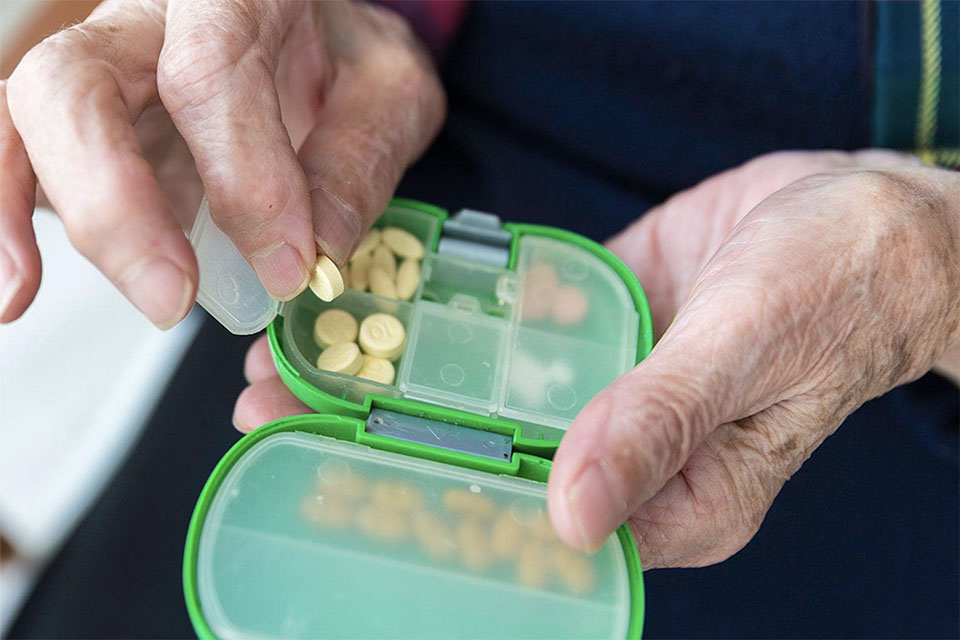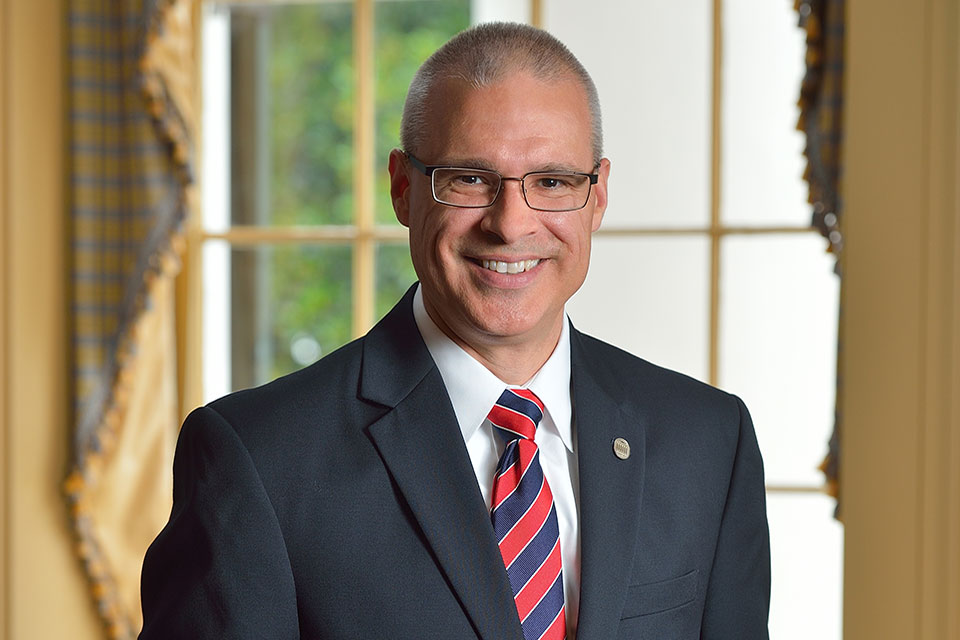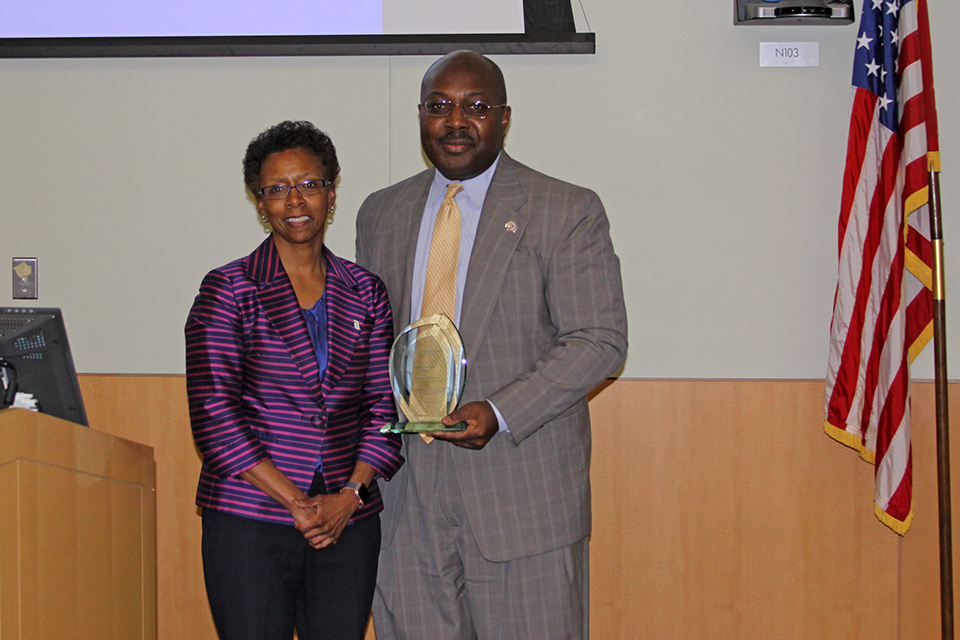SOP’s Annual Pumpian Lecture Shows Quality is King in Health Care Reform
Speaker Laura Cranston emphasizes the importance of quality measures to improve health care and examines how those measures might impact the future of pharmacy practice.
By Malissa Carroll
December 2, 2014
“Within the federal government, there is a major shift to incorporate quality into every model of care. But, quality of care can be described in several ways. Who has the authority to define quality and, more importantly, how can we achieve and measure it?” This was the question that Laura Cranston, RPh, executive director of the Pharmacy Quality Alliance, posed to faculty, staff, and students as she delivered the annual Paul A. Pumpian Memorial Lecture at the University of Maryland School of Pharmacy on Nov. 19.
Titled “Health Care Reform and Quality of Care: What Does It Mean for Pharmacy Practice?”, Cranston’s lecture explored how medication-use measures developed in conjunction with the Affordable Care Act can help resolve the current disconnect between patients and health care providers by leveraging pharmacists’ expertise. She presented an overview of the National Strategy for Quality Improvement in Health Care — a report published by the Department of Health and Human Services to help improve the quality of health care delivered in the United States — and highlighted those specific strategies that affect pharmacy practice and issues such as the overuse of medications and transitions of care.
“The goal of the National Strategy for Quality Improvement in Health Care is to achieve better and more affordable care, better communities, and better health for the entire population,” said Cranston, who oversees the development of medication-use measures and regularly works with health care plans, pharmacy benefit managers, community pharmacy organizations, employers, and others to encourage the uptake and implementation of meaningful medication-use measures in the marketplace. “However, we need to find a way to harmonize quality measures across health care disciplines to arrive at a point of shared responsibility for improving patient outcomes.”
Cranston explained that there are more than 2,000 health care quality measures in place that hold health systems, nursing homes, insurance companies, health plans and providers, and others in the field accountable for quality of care. However, she noted that none of these measures hold pharmacists directly accountable. “Pharmacists are not currently recognized as health care providers, and as a result, are not contracted directly by the federal government. Until pharmacists achieve provider status, they will not be evaluated or held accountable to established health care measures.”
Cranston commended the efforts of schools of pharmacy and professional pharmacy organizations across the country for their efforts to encourage state and federal legislators to pass legislation recognizing pharmacists as health care providers, facilitating a discussion among faculty and students about the measures against which pharmacists should be evaluated. “What does quality mean to you, and against what measures would you want an accrediting organization or other professional society to evaluate your pharmacy?” she asked.
Audience members suggested that pharmacists be measured not only by how well their patients adhere to their medications, but also by their patients’ hospital re-admissions when those admissions occur as a result of a medication error. Both proposed measures underscored the importance of the often underutilized comprehensive medication therapy management (MTM) services provided by pharmacists.
“Currently, comprehensive medication reviews are only required for patients enrolled in the Medicare Part D prescription drug program who spend more than $3,000 out-of-pocket on their medications and have been diagnosed with a certain number of chronic diseases,” said Cranston. “However, only 11 percent of patients in the United States who meet those criteria receive a comprehensive medication review each year.”
Though, she noted that will likely change in the coming years.
“Beginning in 2016, the quality of Medicare prescription drug programs will be measured according to the number of patients who qualified for MTM services, as well as the number of those who received the service,” added Cranston. “Many health plans in the Medicare program will not be able to achieve a five-star ranking without collaborating with their local pharmacists. Now, the administrators of these health plans are beginning to see pharmacists as an important resource.”
To conclude her lecture, Cranston spoke about a growing trend in health care that will likely have a significant impact on the future of pharmacy practice – pay for performance programs. Noting that some community pharmacies already provide incentives to pharmacists who offer services such as immunizations and MTM, Cranston explained that she expects this practice to increase exponentially in the future.
“As more incentives are introduced, the lines between providers and insurance companies are beginning to blur,” said Cranston. “With the advent of pay for performance programs, the incentive systems that encourage pharmacists to practice at the top of their licensure must become more effective, compensating pharmacists for the time they spend providing these vital services. I believe that we are witnessing the beginning of this change.”



